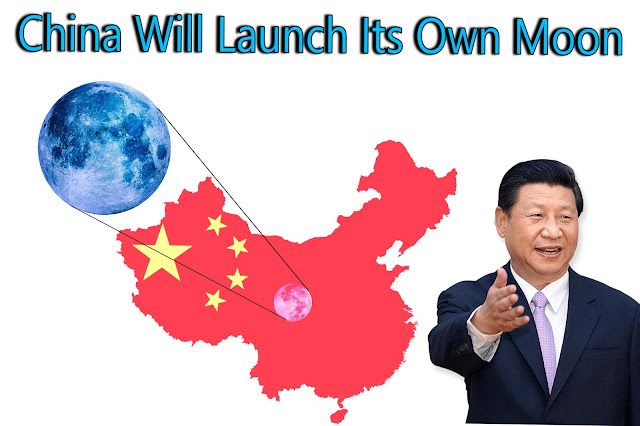China To Launch Its Own Moon to Space in 2020
 |
| China To Launch Its Own Moon to Space in 2020 |
Chengdu, a city in southwestern Sichuan province, is developing "illumination satellites" which will shine eight times brighter than the real moon.
The first man-made moon will launch from Xichang Satellite Launch Center In Sichuan, with three more to follow in 2022 if the first test goes well.
Though the first launch will be experimental, the 2022 satellites will be the real deal with great civic and commercial potential.
How the Chinese Fake Moon works:
- Basically, it is not a moon from 3,84,400 km as the real moon is, but it is a fake moon-like thing which reflects the sunrays to earth from the sun at night time.
- The artificial moon would works as a mirror, reflecting sunlight back to earth, according to China Daily.
- It would orbit 500km above the Earth roughly the same height as the International Space Station while the Moon's average orbit is about 3,80,000km from the Earth.
- The reports gave no details about how the fake moon would look like, but Mr. Wu said it would reflect sunlight across an area of between 10km - 80km with Eight times greater than The Moon.
Advantages:
- It will Reduce the consumption of electricity as there are no street lights.
- Attract tourist to visit China.
- It will reduce electricity expenses.
What impact would this have on the environment?
- Some experts said it will surely confuse nocturnal animals (Animals which lives in the night with the moon dependency), while others say that many cities in China already suffer from light pollution.
- The moon would significantly increase the night-time brightness of an already light-polluted city, creating problems for Chengdu's residents who are unable to screen out the unwanted light.
- If the light is too strong "it will disrupt the night cycle of nature and this could possibly affect animals".
The Russians Came up with the Idea
In 1993, Russian scientist released a 20m wide reflector from a supply ship heading to the Mir Space Station, which was orbiting at between 200km - 420km.
Znamya 2 briefly beamed a spot of light about 5km in diameter to earth. the light marched across Europe at 8km/hr, before the satellite burned up on re-entry.
Chineses should be thankful to Russian that Chinese have copied the Their idea.
After this Chineses experiment success, I'm sure that all the countries over the world will have their own moon by 2025.
Last Updated: 20 OCT 2018

ConversionConversion EmoticonEmoticon